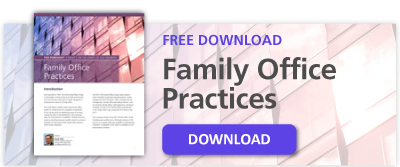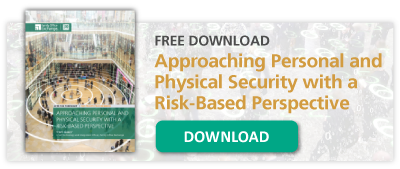Date: Oct 16 2018
The global risk landscape is shifting. Ten years ago, the most critical risks were related to the global financial crisis and the economic challenges created for governments, businesses and individuals. While many economies are now enjoying solid growth, there continues to be significant risk in the current environment stemming from increasing geopolitical tensions, growing environmental threats and the wider deployment of emerging technologies. As global risks evolve, family offices, family members, and their related enterprises should be bold in reframing how they approach risk management.
Changes in the Risk Landscape
Each year, Marsh & McLennan Companies works with the World Economic Forum and other partners to develop the annual Global Risk Report, which evaluates the major risks facing the world today. In addition, Marsh Private Client Services published an in-depth Family Office Benchmarking Study earlier this year. These two publications featured the following highlights:
- Cyber risk is the top risk for family offices as well as business leaders in advanced economies. Juniper Research estimates that cyber attacks will create $8 trillion in economic damage over the next five years. Cyber is also the risk most likely to intensify, and the one for which family offices feel the least prepared.
- Environmental risk was identified as the top long-term risk for businesses and a close second (behind cyber) for family offices. Recent extreme weather events, growing concerns about pollution and biodiversity, and scrutiny from investors, customers, and family members have elevated this risk in the minds of both corporate and family office leaders.
- Business leaders expect growing political and economic confrontation between major world powers. Many countries are escalating their use of economic weapons – such as sanctions and tariffs – in political negotiations. Coupled with rising nationalism and increasing societal polarization, this is creating the potential for surges in social instability and disruptive events.
- Although feelings about the economy are generally positive, vulnerabilities exist. The total global debt-to-GDP ratio is significantly higher now than it was before the 2008 financial crisis, and corporate debt-to-equity ratios have doubled since 2010. The rapid change in the environment is reflected in the fact that the average time a company spends on the S&P 500 index has dwindled from 61 years in 1958 to 12 years today.
These trends demonstrate the challenges in navigating the current environment. New risks and new opportunities exist for family offices as well as family enterprises.
Meeting the Challenge
To succeed, family enterprises should prioritize risk management and reframe it to:
- Align with strategic priorities.
- Devote more resources to emerging risks and technology.
- Focus comprehensively on risk prevention, risk transfer, and risk response.
- Engage key stakeholders from across the family and the enterprise.
As families and family enterprises seek to take advantage of new opportunities, their risk profiles will change. Scenario modeling can help anticipate the losses that are most likely and enable planning in the event they occur.
Finally, emerging technology is starting to enable real-time risk management, offering the potential to both reduce risk and transfer it more effectively. Telematics in cars, smart homes, wearable devices, and other new technologies can help minimize accidents and reduce the potential for losses.
Engaging risk experts and leveraging the advancements that are available now will help ensure your organization is prepared to mitigate significant risks and support the growth of your investments.
~~~
 John Drzik is the President of Marsh’s Global Risk & Digital businesses. John presented on 'Global Risks and Your Risk Management Strategy' at the 2018 FOX Fall Enterprise Forum in October.
John Drzik is the President of Marsh’s Global Risk & Digital businesses. John presented on 'Global Risks and Your Risk Management Strategy' at the 2018 FOX Fall Enterprise Forum in October.



